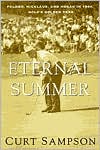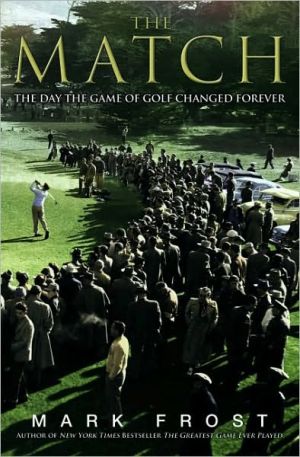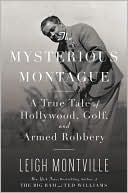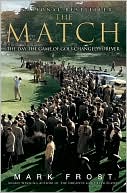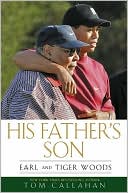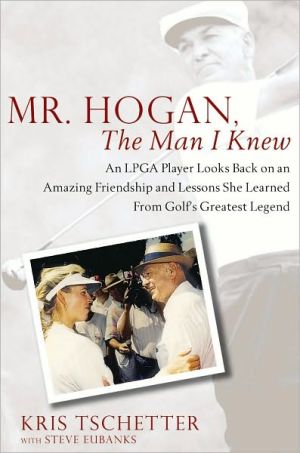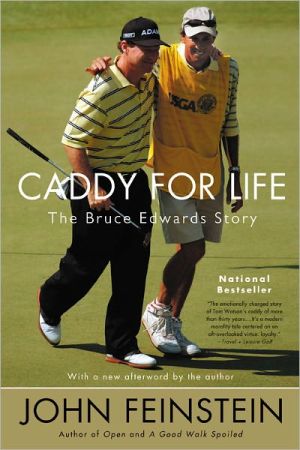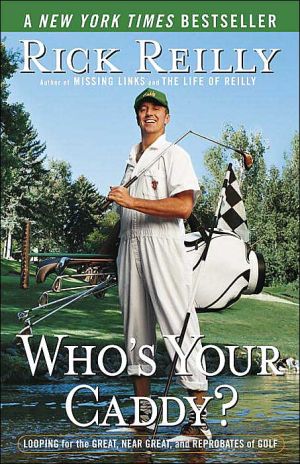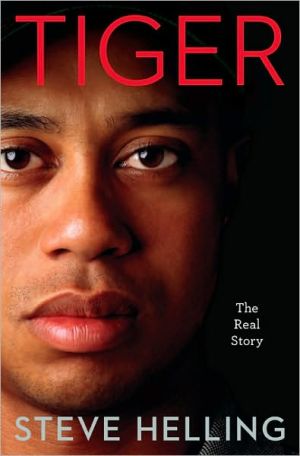The Eternal Summer: Palmer, Nicklaus, and Hogan in 1960, Golf's Golden Year
Was there ever a year in golf like 1960?\ It was the year that the sport and its vivid personalities exploded on the consciousness of the nation, when the past, present, and future of the sport collided. Here was Arnold Palmer, the workingman's hero, "sweating, chain-smoking, shirt-tail flying"; Ben Hogan, the greatest player of the fifties, a perfectionist battling twin demons of age and nerves; and, making his big-time debut, a crew-cut...
Search in google:
Was there ever a year in golf like 1960? It was the year that the sport and its vivid personalities exploded on the consciousness of the nation, when the past, present, and future of the sport collided. Here was Arnold Palmer, the workingman's hero, "sweating, chain-smoking, shirt-tail flying"; Ben Hogan, the greatest player of the fifties, a perfectionist battling twin demons of age and nerves; and, making his big-time debut, a crew-cut college kid who seemed to have the makings of a champion: twenty-year-old Jack Nicklaus. And of course, the rest: Ken Venturi, Chi Chi Rodriguez, Doug Sanders, Gary Player, and the many other colorful characters who chased around a little white ball--and a dream. Would Palmer win the mythical Grand Slam of golf? Could Hogan win one more major tournament? Was Nicklaus the real thing? Even more than an intimate portrait of these men and their exciting times, The Eternal Summer is also an entertaining, perceptive, and hypnotically readable exploration of professional golf in America. Publishers Weekly Sampson ( Texas Golf Legends ) makes a convincing case that 1960 was a watershed for the pro links game. It was the year when the aging Ben Hogan, almost literally on his last legs (he had been badly mangled in an auto crash), was barely hanging on to his past glory; rising star Arnold Palmer was starting to draw the crowds of fans who eventually turned into Arnie's Army; and 20-year-old Jackie Nicklaus was just making his presence known. Even more significant, however, was the increasing interest of major corporations in associating themselves with events on the pro tour and in promising larger and larger purses, a trend that did indeed change the game forever. Photos not seen by PW. (July)
The older a golf writer gets, the more he lives in the past. This may be true of real people, too. I can only speak for golf writers. Youth is in the past, for one thing, and golf writing may have been a hobby as much as a profession, based on the salaries most of us made.\ There have been many splendid, important, landmark years in golf, and 1960 goes in there with four other years that come to mind immediately. There was 1913, when Francis Ouimet did that thing to Harry Vardon and Ted Ray. There was 1930, when Bobby Jones did that thing with the Grand Slam. There was 1945, when Byron Nelson did that thing with eleven in a row. And there was 1953, when Ben Hogan did that thing with the Triple Crown.\ A lot of things put 1960 in there, things that Curt Sampson will tell you about in more detail, but mainly I will always remember it as the year Arnold Palmer became the Arnie of "Whoo, ha, go get 'em, Arnie!"\ It was the year that Palmer, sweating, chain-smoking, driving balls through tree trunks, shirttail flying, took golf to the masses.\ It was the year Arnie's Army was born, a horde of happy street rabble that would later encourage enlistments into Nicklaus's Navy, Lee's Fleas, Ben's Wrens (as in Crenshaw), and Greg's Groupies.\ It started happening at the Masters in '60, when Arnie birdied the last two holes to win, and then he was truly ordained as America's golfing darling at the U.S. Open in June.\ Thanks to the expense account departments at the Fort Worth Press, the Dallas Times Herald, Sports Illustrated, and Golf Digest, in order of their appearance in my life, I'm quite sure I've covered more majors than any golf writer, living or dead. Something like seventy of them to date. And I'm certain I've never seen a more thrilling tournament than the 1960 U.S. Open at Cherry Hills in Denver.\ Three eras came together on the final day, or "Open Saturday," as it was known. The day embraced the last hurrah of Hogan, the confirmation of Palmer, and the preview of a burly Ohio State undergraduate with terrifying length and frightening powers of concentration—Jack W. Nicklaus.\ It's a pleasure to recall that I was an up-close witness to all of the drama that day, but 1960 had other remarkable theater, subplots, undercurrents, and characters that would help change the game as we know it.\ History is only as interesting as the historian makes it, and here I must congratulate Curt Sampson on his passion for the game as well as his skill with a pen. And, while I may not agree with every characterization or interpretation in The Eternal Summer, at least the author comes by his prejudices honestly.\ Sampson was the golf course equivalent of a gym rat as a kid—caddie, shop assistant, greens mower, and gofer. He played hooky regularly to watch the CBS Golf Classic, which was taped at Firestone Country Club every fall in the late sixties. Inspired by all this proximity to golf pros, he became a minor league touring professional himself, though his name was hard to find among the money winners.\ He then sold widgets for ten years before returning to golf as a writer, and made the unhappy discovery that widget salesmen play more golf than golf writers do.\ The Eternal Summer will make you feel like you are there at Augusta, Cherry Hills, St. Andrews, and many other places.\ I know. I was there. In some ways, I'm still there.
ForewordxiAcknowledgmentsxvIntroduction: Florence Zupnik and the Proettes31William Ben232Arnold Daniel373Jack William554Ahno Pomma725I Shoulda Won the Open1006Small Ball1497The Rubber City184Coda225
\ Publishers Weekly - Publisher's Weekly\ Sampson ( Texas Golf Legends ) makes a convincing case that 1960 was a watershed for the pro links game. It was the year when the aging Ben Hogan, almost literally on his last legs (he had been badly mangled in an auto crash), was barely hanging on to his past glory; rising star Arnold Palmer was starting to draw the crowds of fans who eventually turned into Arnie's Army; and 20-year-old Jackie Nicklaus was just making his presence known. Even more significant, however, was the increasing interest of major corporations in associating themselves with events on the pro tour and in promising larger and larger purses, a trend that did indeed change the game forever. Photos not seen by PW. (July)\ \ \ \ \ Library JournalAlthough certainly not a groundbreaking book, this is a well-told reminiscence of professional golf during the 1960 season. Sampson, a former professional, writes from a love for the sport and deftly weaves in the careers of stellar performers Arnold Palmer, Sam Snead, and Jack Nicklaus. While each golfer was at a different career stage, during this one season their paths crossed at several events, most notably the U.S. Open. Chapters outlining each golfer and detailing their beginnings in the sport are included. This volume succeeds in bringing the three together, just as they were in 1960. A good selection for strong golf collections.-- Jeffrey Gay, Bridgewater P.L., Mass.\ \
